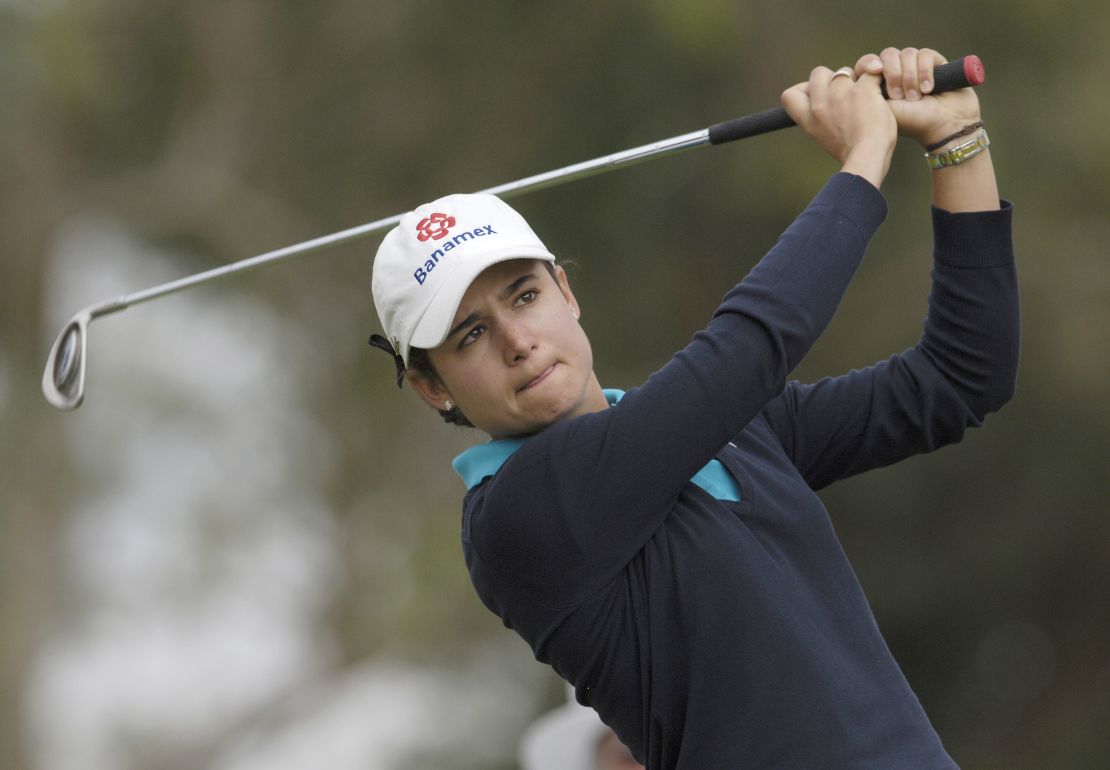Imagine if Tiger Woods retired from professional golf at the age of 28, when he was world No. 1 and at the height of his powers.
It would have sent shockwaves through sport.
But in 2010, the best player in the women’s game did just that.
After 158 consecutive weeks at the top of the world rankings and two major titles, Mexico’s Lorena Ochoa announced she was quitting the game.
”Your life looks great and I enjoyed traveling, the glamor, it was amazing,” says Lorena Ochoa when she recently spoke to CNN Living Golf’s Shane O’Donoghue.

READ: Golf great Annika Sorenstam fights gender stereotypes
”But for me, getting married and having a family, that was more important. Now that I’m a mother, I wouldn’t change that for anything in the world and I feel blessed. I’m really, really happy that I made the decision at the right time and now I can enjoy 100% this second stage of my life.”
For many female professional athletes, the decision to have children comes just when they are in the prime of their careers, as happened with Ochoa.
”I do think it’s easy to forget that in any sport a female athlete might have a desire to have children, and when you read a news headline that a female pro golfer is expecting a baby, there is surprise attached to the revelation, assuming perhaps wrongly that this is the end of their playing career,” says Alison Root, editor of Women & Golf.
”Female executives can juggle children with a life in the boardroom, but sport is different given the level of fitness required and continual practice to keep your game in shape to compete at the highest level, hence why it’s a difficult decision as to when is the right time.”

READ: Lexi Thompson “addicted” to working out
The LPGA Tour in the United States boasts a number of golfing moms, including Juli Inkster, Cristie Kerr and Catriona Matthew, while Stacy Lewis has just recently announced that she is pregnant.
The LPGA has set up a number of initiatives for both mothers and their children on tour. ”As a women’s sports organization, it is important for us to have policies and programs that provide choices to our athletes who want to have families,” says Heather Daly-Donofrio, the LPGA’s chief communications and Tour operations officer.
”Our flexible maternity policy allows our athletes the time they need with their babies without the pressure of losing their playing status.
“Once they return to competition, the traveling Smucker’s Child Development Center provides a safe and loving environment for the children while mom is at work on the course.
“Our ultimate goal is to empower our athletes so they can be successful at both passions – professional golf and motherhood.”
Ochoa’s rivalry with Annika Sorenstam, who herself retired at the relatively young age of 37, defined the women’s game in the early 2000s.

As Sorenstam was coming to the end of her career, Ochoa was on the rise. Despite being rivals, they were also great friends.
”When I first started playing on Tour, I could only see Annika and I wanted to be like Annika,” she says.
”We had all these battles together, I lost many times against her but she always told me, ‘Don’t worry, you’re going to make it, you’re so close.’ She only showed respect and we have great memories together. I admire her a lot, not only inside the golf course but also outside too.”
Like Sorenstam, Ochoa has been busy in so-called “retirement,” building a brand to enhance her legacy in the game.
The Mexican began hosting her own tournament on the LPGA Tour in 2008, while her family business has also branched into player management, tournament operations and a charitable foundation.
”I think the best thing that happened to me was being able to have a foundation, the Lorena Ochoa Foundation,” she says.

”The school that we have, La Barranca, has seen more than 4,000 children already graduate from the school. So the lives that we change, not only the students but the families, the community, the improvements, we clearly see how we help them in having a better life, a better future.”
The woman with 27 LPGA Tour victories, two majors and three children couldn’t be happier.
